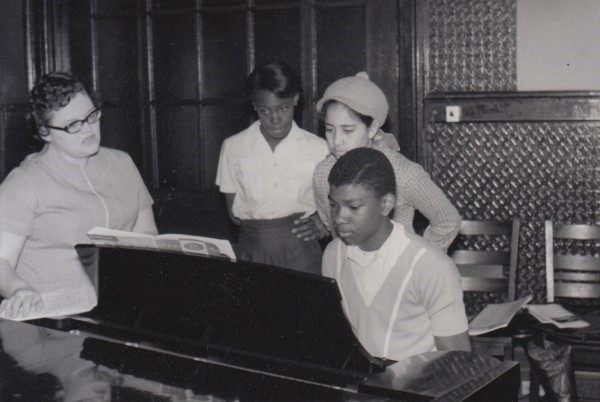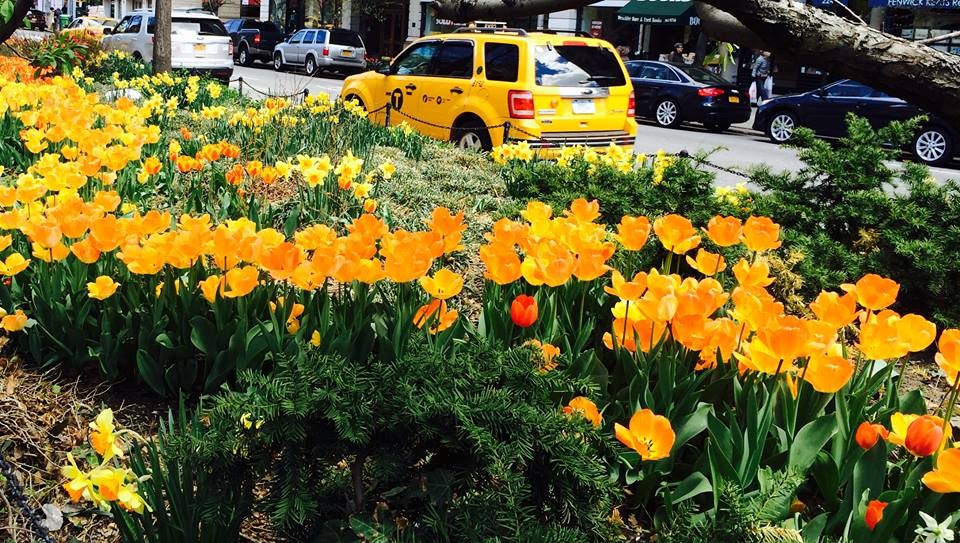The History of Columbia Community Service

At a time when there were no female students and only a handful of female faculty members on Columbia’s campus, a group of civic-minded women joined together to make a difference both locally and globally. In 1942, Isadore Gilbert Mudge (1875 – 1957), who has since been named one of the top 100 important library leaders of the 20th century, sold bouquets of flowers from her own garden to raise money that would benefit the war relief effort. Mudge and her friends, Lolita Finch, the wife of the Dean of the School of Engineering and Applied Science, and Elizabeth S. Blake, the daughter of a Columbia professor, soon established the Columbia Committee for Community Service to support a range of charitable causes, in addition to the war relief effort. They sent funds to Peking, China for the treatment of tuberculosis, and food and clothing to Greece. They established the “Children’s Programs Series” to provide enrichment for underserved children in the University’s neighborhood, and student loan funds to help local youth.
To support their philanthropic efforts, the Columbia Committee for Community Service opened a small, local gift shop through which they had raised $20,000 by 1946. They collected their inventory from Columbia’s faculty and staff who donated jewelry, crystal, china, silver, oil paintings, furniture, and books, which the women running the shop appraised and sold. They also opened a thrift shop, and published a cook book entitled What’s Cooking at Columbia, which became one of their best-selling items. In November of 1947, the Columbia Committee for Community Service sent out a letter to all Columbia faculty and staff appealing for contributions to help them support organizations and charitable projects at home and abroad. Due to their successful appeals and their ongoing retail work, the Columbia Committee for Community Service had raised an additional $23,000 by 1953. They donated the funds to The Rheumatic Fever Research Institute, New York Cancer Committee, New York Fund, The American Heart Association, The American Friends Service Committee, Save the Children Federation, The Iron Curtain Refugee Committee, and The American Farm School in Greece.

Recognizing the pressing needs of the neighborhoods surrounding the University, the leaders of CCS decided to begin deploying volunteers and distributing grants exclusively to the local area in the early 1960s. They continued to provide vital support to the neighborhood during the sharp economic downturn and urban blight of the 1970s and 1980s. In the mid-1980s they joined with United Way to increase their fundraising capacity, but split from the umbrella organization in the early 1990s in order to maintain their independent decision-making policies.
In 1996, CCS celebrated its 50th year with a reception at Low Memorial Library. Both University President George Rupp and Manhattan Borough President Ruth Messinger spoke at the event. Rupp lauded CCS for its meaningful contributions to the neighborhood, and Messinger congratulated CCS for the important role it plays for Columbia and for the entire nation. Several of the grantee organizations, many of which continue to be partnered with CCS today, expressed their gratitude. Representatives from Harlem Hospital and the St. Mary’s Soup Kitchen thanked CCS for their positive impact on the programs that are vital to their neighbors in need.
With the growing generosity of the University’s faculty and staff, CCS now raises $300,000 per year, giving every dollar to local nonprofit organizations working to build a happier, healthier, and stronger Uptown Manhattan. Like its founders, the supporters of CCS today continue to provide critical relief to those who need it most.
